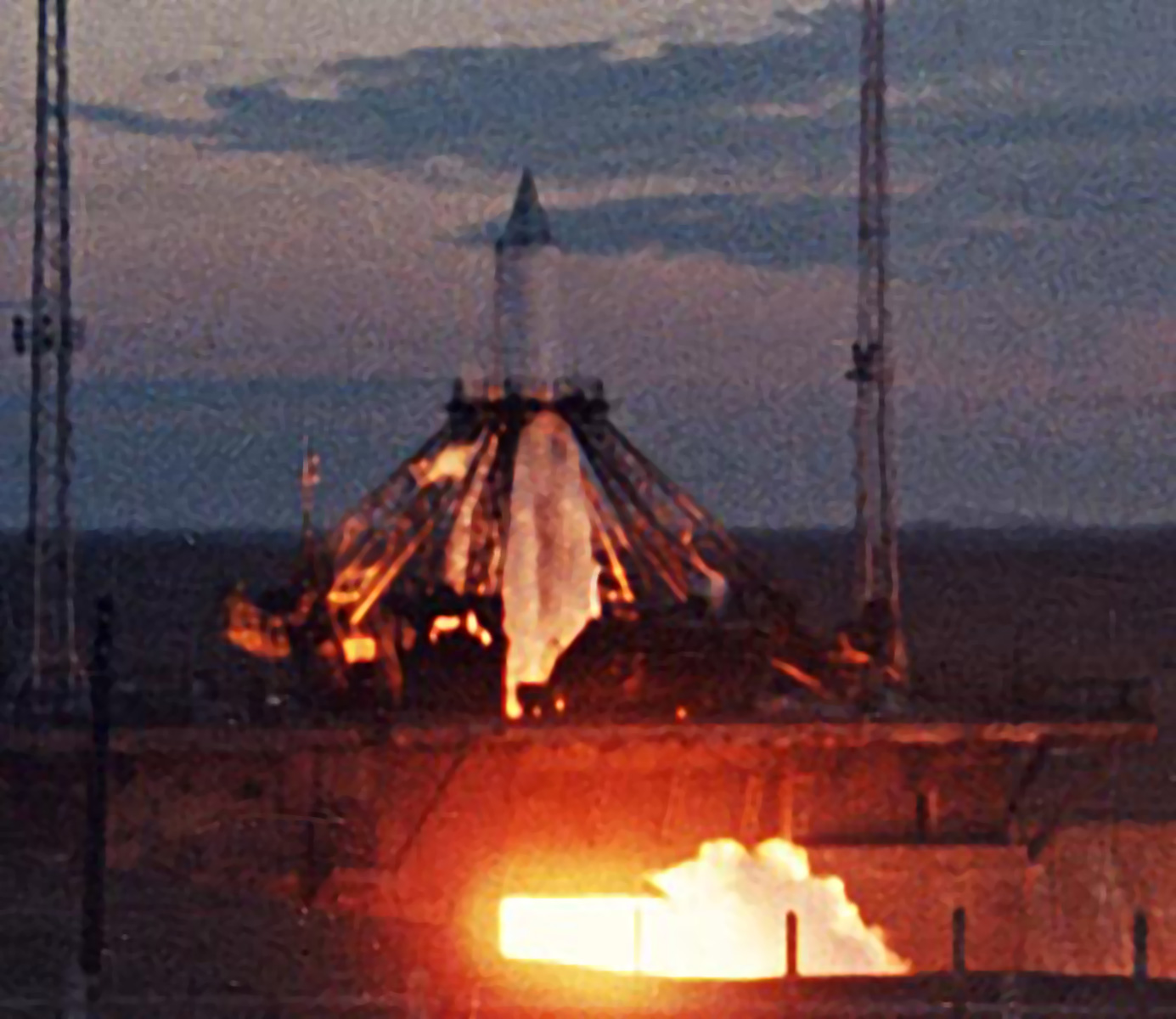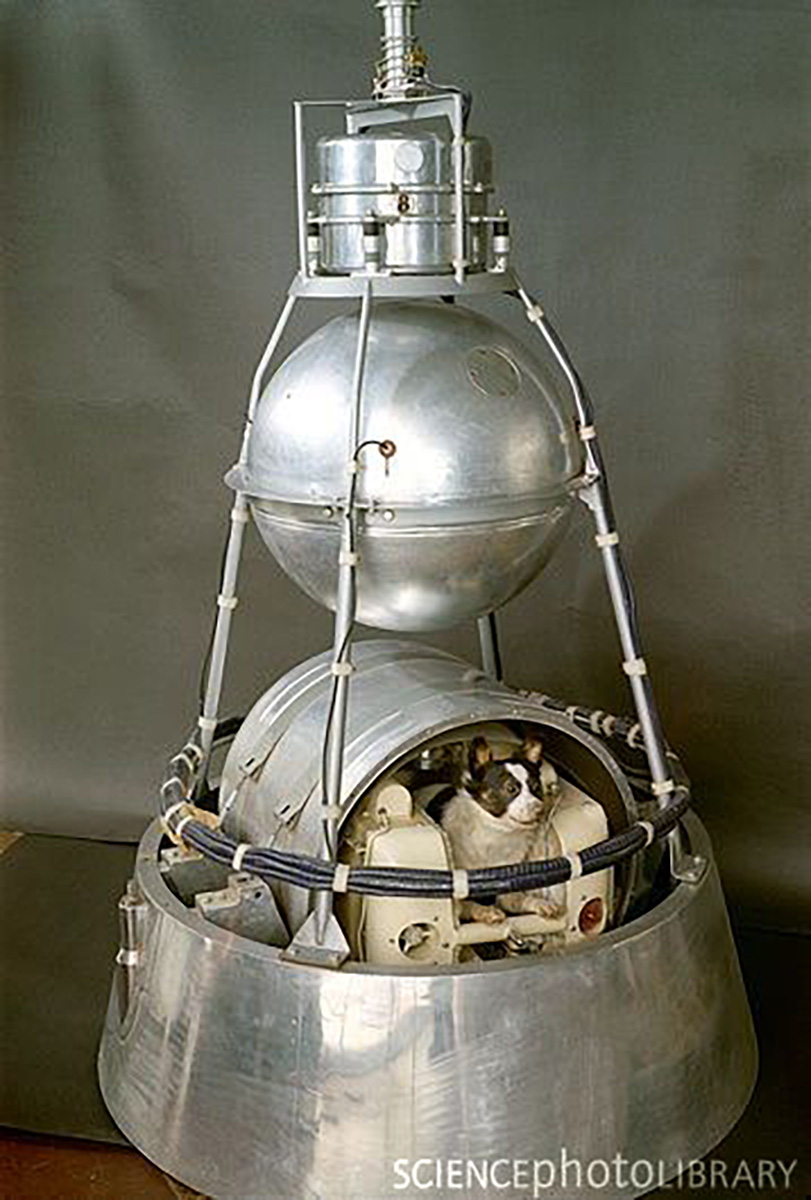On November 3, 1957, less than a month after they inaugurated the Space Age, the Soviet Union took the next big step with the launch of Sputnik 2. Hurriedly prepared to take advantage of the propaganda value of the first satellite, Sputnik 2 utilized an animal habitat and carried the dog Laika, the first animal to orbit the Earth. The event began to galvanize the United States into organizing their space program. Future Manned Spacecraft Center Director Robert Gilruth told historians, “When I saw the dog go up, I said, ‘My God, we better get going because it’s going to be a legitimate program to put man in space.’”
Sputnik 2 weighed 508 kg, significantly more than its simpler predecessor, and remained attached to its booster rocket after achieving orbit. Due to the lack of adequate development time, no provisions were made to recover Laika. Engineers had not designed the environmental control system for a lengthy mission and it is likely that Laika only survived for a few hours after reaching orbit. On November 10, the satellite’s batteries expired, and receipt of data from the science experiments also ceased. Sputnik 2 burned up on reentry on April 14, 1958. It would be nearly three years before the Soviet Union orbited more animals, this time returning the entire “crew” safely to Earth, the first steps in preparation for human space flight.


























